Toronto is recognized as a global creative hub, boasting a diverse array of industries including film and TV production, video game design, fashion, music, and art. Renowned for events like the Toronto International Film Festival (TIFF), the city’s creative sector continues to thrive, drawing attention not only for its cultural contributions but also for its economic significance. The industries in the creative economy have an enormous impact on the city’s cultural influence, economy, and future development.
What is a Creative Economy?
Also known as the orange economy, it is an evolving concept that tries to capture and define the relationship between the economy and culture. This has resulted in many terms such as cultural, creative, leisure, entertainment, or content industries. Economists at the Inter-American Bank argue that despite the numerous and diverse definitions the three key elements of the orange economy are:
- Creativity, arts, and culture as productive endeavours
- Products strongly related to property rights, in particular, copyright
- Activities with a direct role in the value chain transforming ideas into products
On a global scale, the creative economy is recognized as playing an important role in international trade. According to the United Nations Conference on Trade and Development (UNCTAD), this sector was projected to reach a global valuation of $985 billion in 2023 and could represent 10% of global GDP before 2030. Earlier estimates suggested that if the creative economy was a country, it would be the fourth-largest world economy with the fourth-largest labour force (Source: Interamerican Development Bank).
Economic Impact of Toronto’s Creative Industries
Toronto’s creative industries play a pivotal role in shaping the city’s identity and driving economic growth. Toronto is the first Canadian city to be named a UNESCO Creative City of Media Arts for its “leadership in film, music, digital media and forms of cultural expression using technology.” The city’s recognition keeps growing earning titles such as Moviemaker’s 2024 Best City to Live and Work.
Toronto’s creative industries span a wide spectrum, encompassing film and TV production, design, fashion, creative technology, and music. The city’s cultural diversity catalyzes creativity, with events like the Toronto International Film Festival (TIFF) serving as global platforms for showcasing diverse cinematic voices. Notably, TIFF’s People’s Choice Award has become a barometer for predicting international box-office hits, reflecting Toronto’s influence on the global stage and the power of its diversity. According to national census data, 32% of those employed in the arts and entertainment sector in the Toronto Region identify as a visible minority (Fig 1). The makeup of those identifying as a visible minority reflects the region’s cultural mosaic and rich diversity (Fig 2).
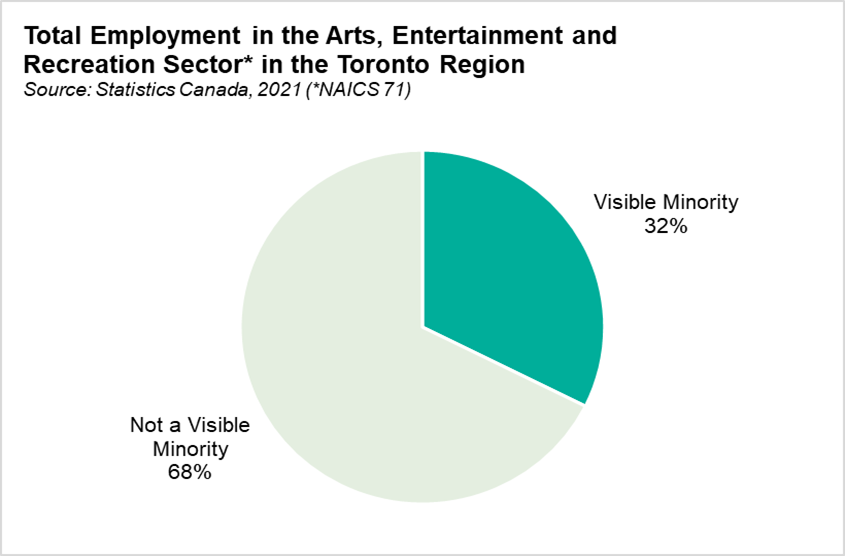
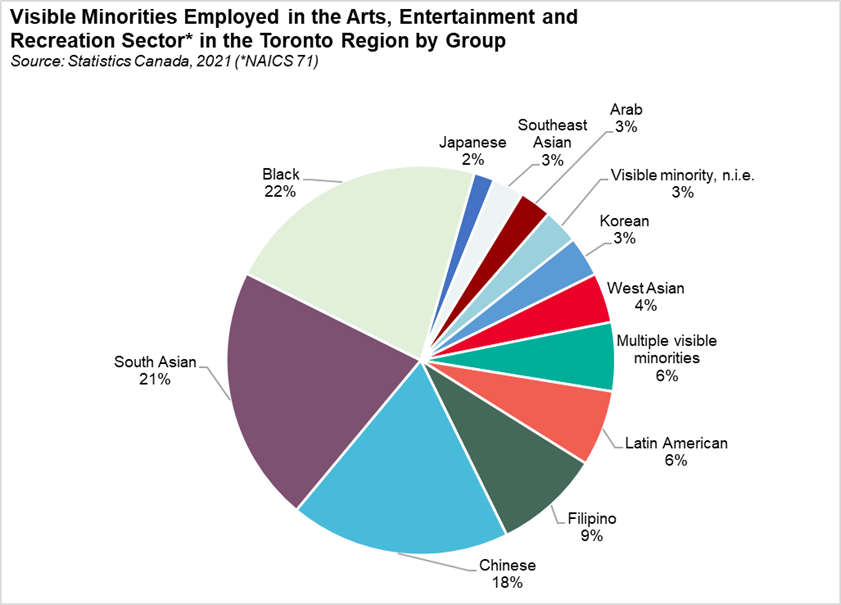
The economic contributions of the creative industries are substantial with sectors like film and TV production contributing a record $3.15 billion into Ontario’s economy creating 45,891 full-time equivalent direct and spin-off jobs. Toronto is one of the top five screen-based industries in North America providing support for services, suppliers, talent, facilities, and locations.
The local film industry stays ahead of the curve on global challenges with initiatives such as the Ontario Green Screen Initiative, addressing the climate change challenges of the industry such as pathways to lower carbon emissions, reduce waste, and adopt sustainable practices in film and TV production.
Only last year there were 419 film and TV projects including foreign and domestic productions spanning feature films, TV series, movies, and animation projects. Notable productions filmed last year in the Toronto Region include Sofia Coppola’s Priscilla, Amazon’s The Boys, and Netflix’s Ginny and Georgia.
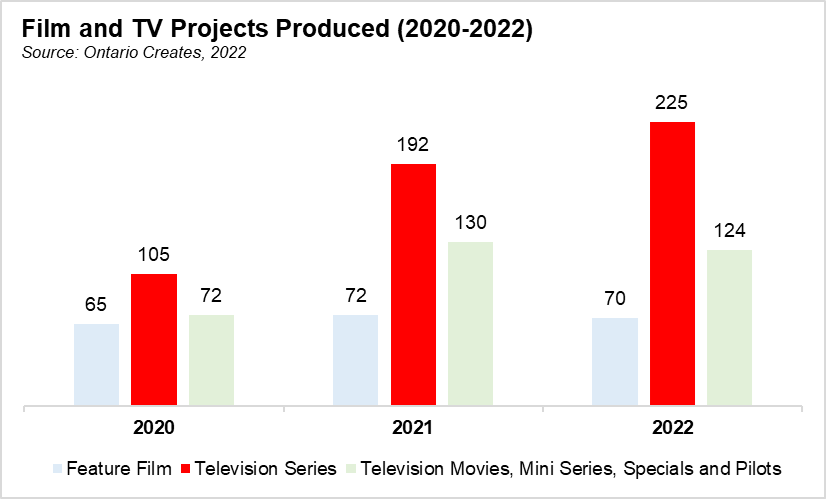
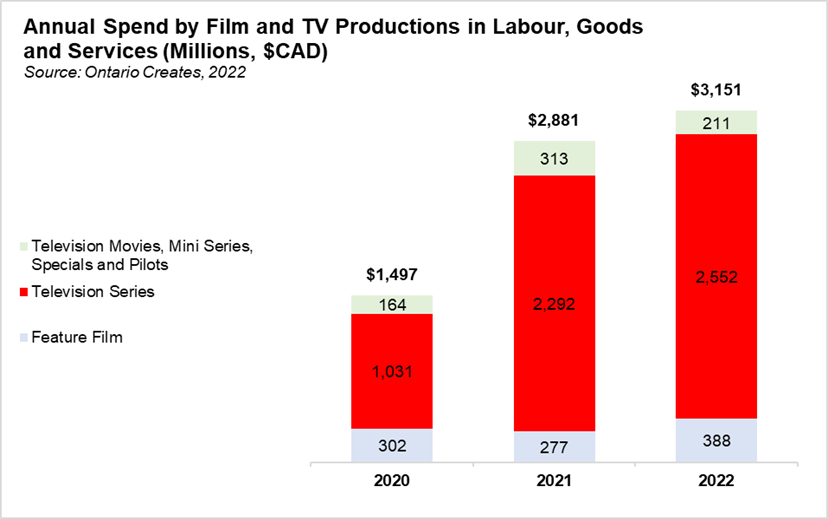
This year is starting off no different with Amazon MGM Studios announcing a multi-year contract with Toronto’s downtown Pinewood Studios for exclusive use of their new production facilities. Pinewood Studios offers North America’s largest purpose-built stage. This deal spotlights the region’s position as a leading location for film and TV production.
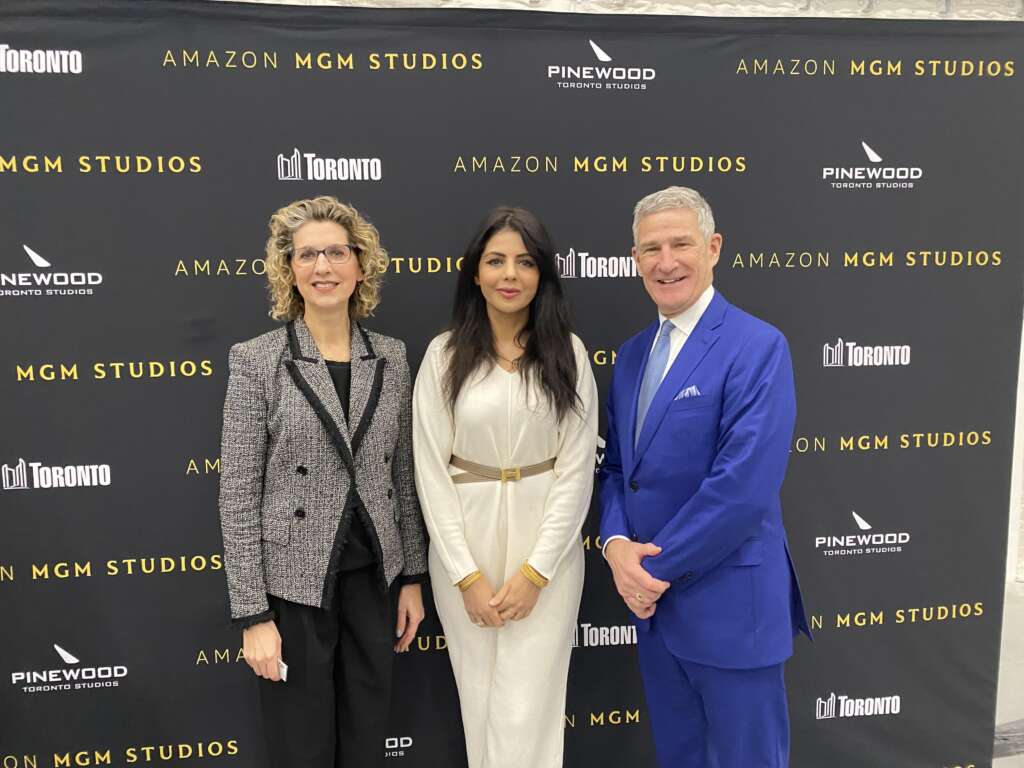
Currently, there are 3.8 million square feet of stage space in Ontario. In the next few years stage space will increase by 2.4 million square feet in the Toronto Region and surrounding areas– an over 60% increase to what is currently available.
Other sectors contributing to Toronto’s creative industries include music and creative technology such as video game design, Artificial Reality (AR), Virtual Reality (VR), Extended Reality (XR), e-sports, and VFX. Video game production is a key creative technology industry in Toronto, with most Ontario’s 298 video game companies found in the region.
Toronto is home to well-known indie studios, including Toronto Global clients Ubisoft, DNEG, and Certain Affinity. These studios employ approximately 7,000 skilled video game workers and provide indirect labour impact through spin-offs such as tourism and other industries that supply the video game industry.
Similarly, the music industry generates $850 million annually through live music venues in Toronto and provides 10,500 jobs. Labour income created by the operations and tourism impacts of Toronto’s live music venues totals $514 million each year.
With over 75 recording studios, and more than 18,000 registered musicians, music creators, composers, beatmakers, and lyricists, Ontario holds a market share of 60% of the total Canadian GDP generated by the sector.
A Track Record of Success
Toronto’s position as a global creative hub is not only a testament to its vibrant culture but also a reflection of its economic vitality. At Toronto Global, we specialize in assisting international companies that are interested in expanding to the Toronto Region, connecting them with resources, opportunities, and talent in the city’s flourishing creative industries.
Our track record includes success stories from clients like Netflix, 88 Pictures Studios, Certain Affinity, and DNEG who have all established a presence in the region. By providing strategic support, Toronto Global empowers businesses to make their mark in our creative industries.
One thing becomes abundantly clear about Toronto’s creative economy: the city’s artistic tapestry is not just about cultural richness but also a powerful economic force driving growth and innovation.
From blockbuster film productions to groundbreaking advancements in creative technology, Toronto’s creative industries are fueling employment, investment, and innovation in the region. The future of our creative economy is shaped by our diversity, talent, and the impact we leave on the global stage.




